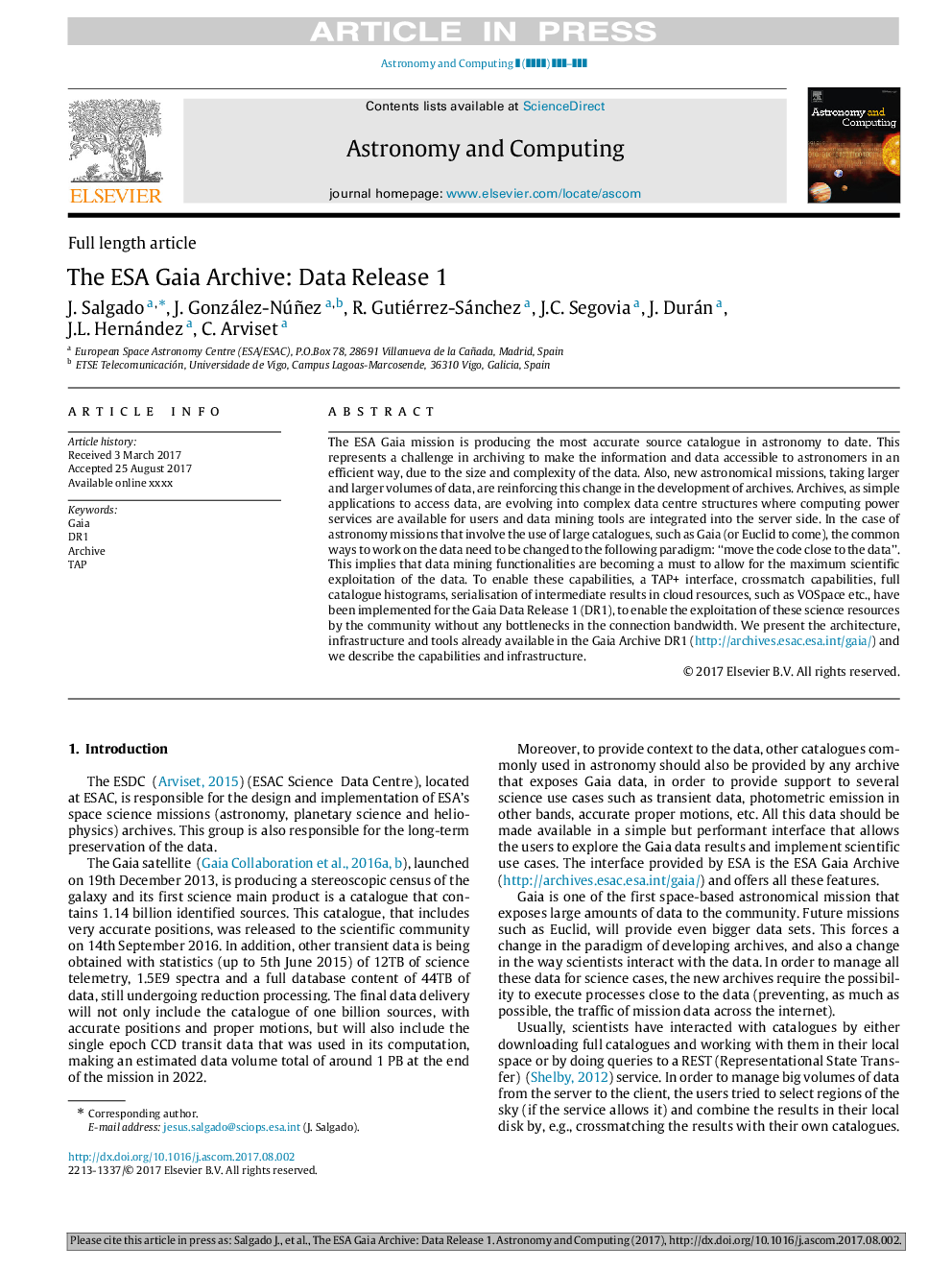| Article ID | Journal | Published Year | Pages | File Type |
|---|---|---|---|---|
| 6906069 | Astronomy and Computing | 2017 | 5 Pages |
Abstract
The ESA Gaia mission is producing the most accurate source catalogue in astronomy to date. This represents a challenge in archiving to make the information and data accessible to astronomers in an efficient way, due to the size and complexity of the data. Also, new astronomical missions, taking larger and larger volumes of data, are reinforcing this change in the development of archives. Archives, as simple applications to access data, are evolving into complex data centre structures where computing power services are available for users and data mining tools are integrated into the server side. In the case of astronomy missions that involve the use of large catalogues, such as Gaia (or Euclid to come), the common ways to work on the data need to be changed to the following paradigm: “move the code close to the data”. This implies that data mining functionalities are becoming a must to allow for the maximum scientific exploitation of the data. To enable these capabilities, a TAP+ interface, crossmatch capabilities, full catalogue histograms, serialisation of intermediate results in cloud resources, such as VOSpace etc., have been implemented for the Gaia Data Release 1 (DR1), to enable the exploitation of these science resources by the community without any bottlenecks in the connection bandwidth. We present the architecture, infrastructure and tools already available in the Gaia Archive DR1 (http://archives.esac.esa.int/gaia/) and we describe the capabilities and infrastructure.
Related Topics
Physical Sciences and Engineering
Computer Science
Computer Science Applications
Authors
J. Salgado, J. González-Núñez, R. Gutiérrez-Sánchez, J.C. Segovia, J. Durán, J.L. Hernández, C. Arviset,
